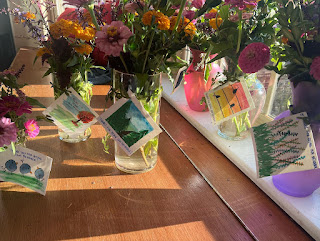To Overcome Loneliness: Get Off the Computer and Make Connections
Being neighborly is something of a lost art in America. In the 1970s, according to the Pew Research Center, more than 60 percent of people socialized with their neighbors at least monthly. Today, that number has shrunk to about 35 percent. According to research released last year, a third of Americans don't have any interactions with their neighbors at all. Another study says half of us cannot name one of the people who share our buildings and blocks.
There are lots of reasons for this shift, from development patterns that make it harder to connect with people nearby to technologies that make it easier to connect with people far away.
The combined effect, says Marc Dunkelman of Brown University, is significant. A couple of years ago, Dunkelman wrote "The Vanishing Neighbor: The Transformation of American Community." He is certain that it has profoundly affected politics, economics, and innovation.
"The lack of neighborly connections matters greatly," Dunkelman told me by phone.
Likening human relationships to the rings of Saturn, he says we are increasingly spending our time and energy on the inner ring, which is full of family and close friends, and on the outer ring, which is full of people we don't know but share an interest with, typically online.
It's that middle ring — the one powered by "relationships that are familiar, but not intimate" — that we increasingly overlook. Dunkelman, who moved his own family from Washington, D.C., to Providence, R.I., in search of a more neighborly community, says the loss of the middle ring is a root cause of, among other things, political dysfunction in America.
Issues that used to be hashed out over backyard fences are now hashed out in the halls of Congress. The less we talk with people who have different viewpoints, the more "battle-hardened" we all become.
This disappearance of middle-ring relationships also has implications for community and place. "You're much less likely to go to a PTA meeting, bowl in a league, or have a block party when you don't know your neighbors," Dunkelman said.
In Jacqueline Olds and Richard Schwartz's book, "The Lonely American," these physiatrists write that the increased use of technology increases people's feelings of loneliness. "Loneliness is not the goal. It's just the spot where too many people wind up. The solution to the problem of social disconnection in America is not to eradicate moments of solitude in people's lives. … It comes down to a matter of balance. As a country, we have lost our balance."
Their book also cites a Pew Research study: "The more time people spend using the Internet (and social media apps), the more they lose contact with their social environment. As Internet use grows, Americans report spending less time with friends and families, shopping in stores, or even watching television, and working more for their employers at home without cutting back their hours at the office. A key finding of the study is that the more hours people use the Internet, the less time they spend with real human beings."





Comments
Post a Comment